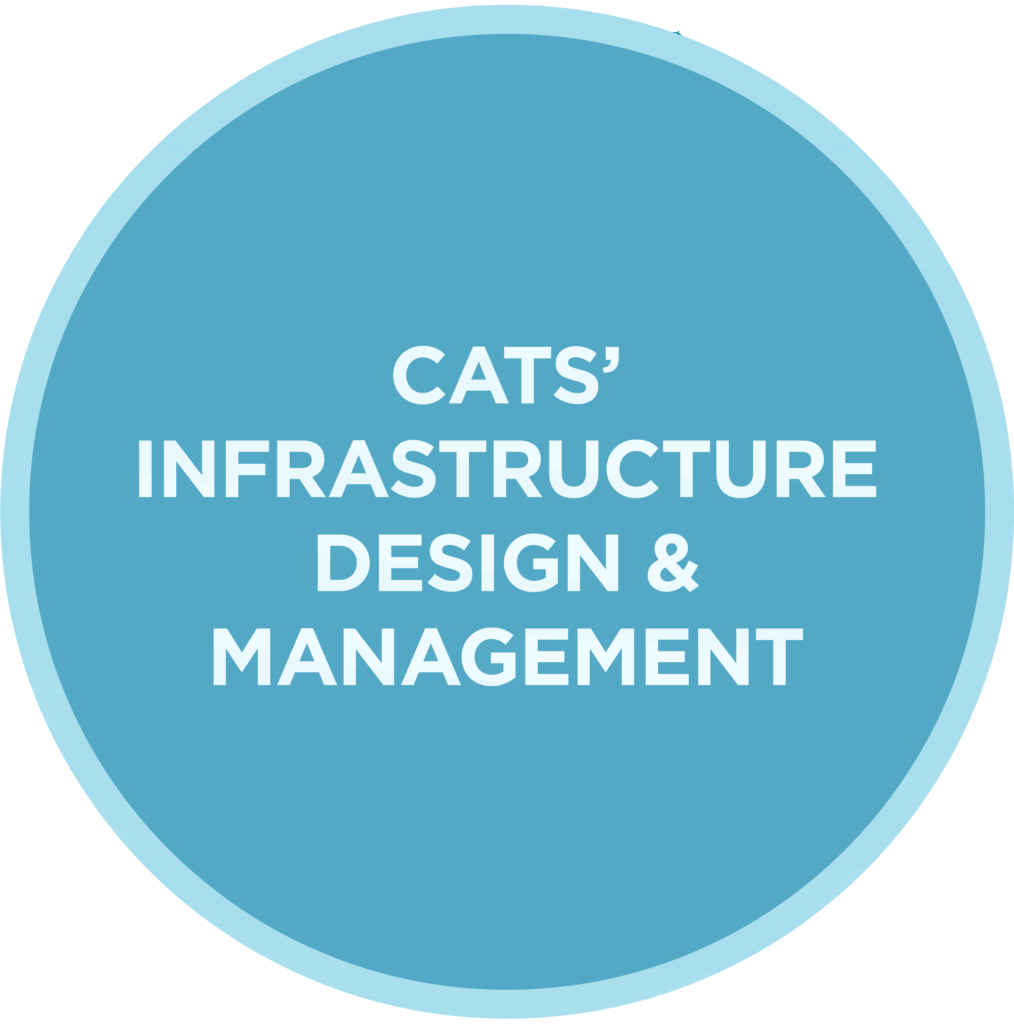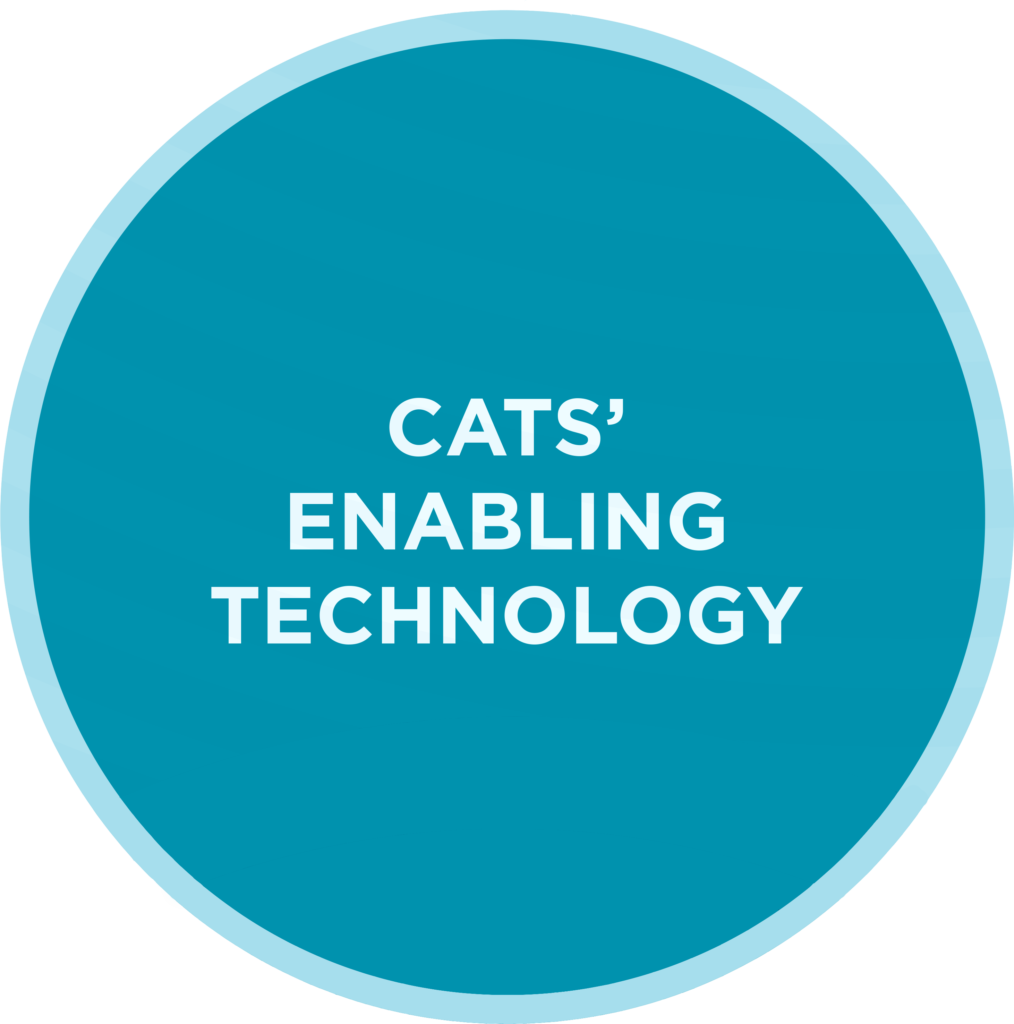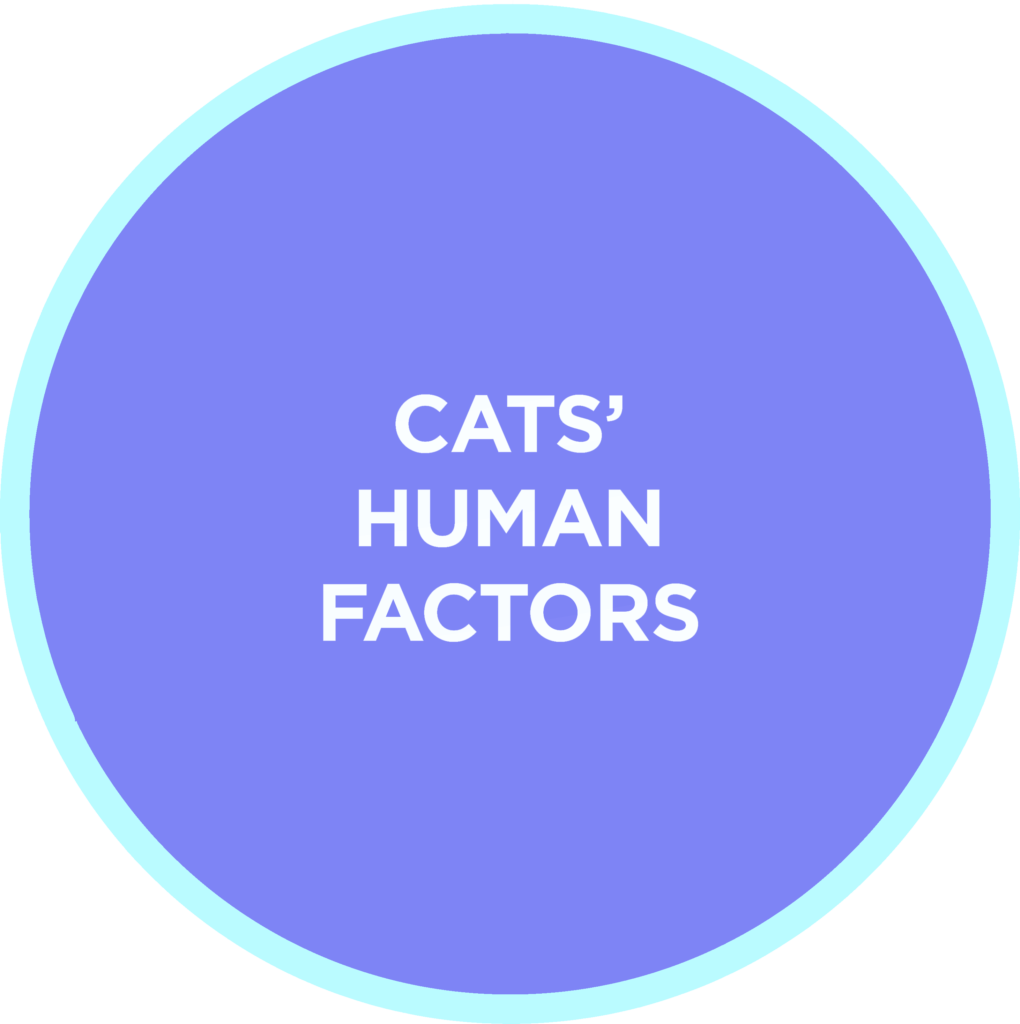As CAV technologies provide new paradigms for the future transportation system, there is an urgent need for models that can predict traffic flow under different levels of vehicle connectivity and automation. Hence, CCAT’s modeling and implementation cross-cutting thrust area is motivated by two key aspects. First, consistent with a future transportation system characterized by CAV technologies, there is the need for models that can evaluate the performance and characteristics of CAV-based transportation systems. Second, CCAT’s unparalleled resources such as Mcity and Ann Arbor Connected Vehicle Test Environment (AACVTE) provide the team immediate opportunities to test models in a real-world environment. Hence, the cross-cutting activities related to model development and field implementation, provide us unique opportunities to implement and test models in the field, and use the field data to refine, calibrate and validate models. This enables the development of models that can test “what-if” scenarios of capabilities before they are deployed in the real-world by transportation agencies and the auto industry. The modeling research will focus on bringing the automation and connectivity capabilities for the evaluation of transportation system safety and performance in connected environments, and with different levels of automation.
Research Focusing on Modeling & Implementation
| 2021 International Symposium on Transportation Data and Modelling (ISTDM) |
| Principal Investigator: Yafeng Yin Research Thrusts: Control & Operations, Enabling Technology, Human Factors, Infrastructure Design & Management, Modeling & Implementation, Policy & Planning |
| A Data-Driven Autonomous Driving Systems for Overtaking Bicyclists |
| Principal Investigator: Brian Lin & Shan Bao Research Thrusts: Human Factors, Modeling & Implementation |
| Accelerated Training for Connected and Automated Vehicles Based on Adaptive Evaluation Method |
| Principal Investigator: Henry Liu Research Thrusts: Control & Operations, Enabling Technology, Modeling & Implementation |
| AI-enabled Transportation Network Analysis, Planning, and Operations |
| Principal Investigator: Yafeng Yin Research Thrusts: Control & Operations, Modeling & Implementation, Policy & Planning |
| Augmented Reality Testing Environment Development – Phase II |
| Principal Investigator: Yiheng Feng & Henry Liu Research Thrusts: Enabling Technology, Modeling & Implementation |
| Autonomy in Transportation Education |
| Principal Investigator: Neda Masoud Research Thrusts: Control & Operations, Human Factors, Infrastructure Design & Management, Modeling & Implementation |
| AV Occupant ID Optical Based Occupant Identification and Classification for Autonomous Vehicles |
| Principal Investigator: Matt Reed Research Thrusts: Control & Operations, Enabling Technology, Human Factors, Modeling & Implementation, Policy & Planning |
| CAV Systems Incorporating Air Pollution Information from Traffic Congestion |
| Principal Investigator: Krishnakumar Nedunuri, Ramanitharan Kandiah, Deng Cao Research Thrusts: Enabling Technology, Modeling & Implementation |
| CAV Testing Scenario Design and Implementation using Naturalistic Driving Data and Augmented Reality |
| Principal Investigator: Yiheng Feng, Shan Bao, & Henry Liu Research Thrusts: Control & Operations, Enabling Technology, Human Factors, Modeling & Implementation |
| CCAT Ann Arbor Connected Environment (AACE) Operations and Maintenance |
| Principal Investigator: Henry Liu Research Thrusts: Control & Operations, Enabling Technology, Human Factors, Infrastructure Design & Management, Modeling & Implementation, Policy & Planning |
| Changes in Highway Agency Expenditures and Revenue in an Era of CAVs |
| Principal Investigator: Samuel Labi, Kumares Sinha, & Mohammad Miralinaghi Research Thrusts: Infrastructure Design & Management, Modeling & Implementation, Policy & Planning |
| DeepScenario: City Scale Scenario Generation for Automated Driving System Testing & Evaluation |
| Principal Investigator: Henry Liu, Shan Bao, & Brian Lin Research Thrusts: Enabling Technology, Human Factors, Modeling & Implementation |
| Design and Management of Highway Infrastructure to Accommodate CAVs |
| Principal Investigator: Samuel Labi, Kumares Sinha, & Mohammad Miralinaghi Research Thrusts: Infrastructure Design & Management, Modeling & Implementation, Policy & Planning |
| Design and Operation of Efficient and Budget-Balanced Shared-Use Mobility Systems |
| Principal Investigator: Neda Masoud Research Thrusts: Modeling & Implementation |
| Develop In-Vehicle Information Dissemination Mechanisms to Reduce Cognitive Burden in the Information-Rich Driving Environment |
| Principal Investigator: Srinivas Peeta Research Thrusts: Control & Operations, Modeling & Implementation |
| Developing Decision-Making Models for AV Movements at the Unsignalized Intersections |
| Principal Investigator: James Sayer & Brian Lin Research Thrusts: Control & Operations, Enabling Technology, Modeling & Implementation |
| Development of A Cooperative Perception System |
| Principal Investigator: Yiheng Feng & Andrew Tarko Research Thrusts: Control & Operations, Enabling Technology, Infrastructure Design & Management, Modeling & Implementation |
| Development of AI-Based and Control-Based Systems for Safe and Efficient Operations of Connected and Autonomous Vehicles |
| Principal Investigator: Samuel Labi & Sikai Chen Research Thrusts: Control & Operations, Enabling Technology, Modeling & Implementation |
| Development of An Augmented Reality Environment for Connected and Automated Vehicle Testing |
| Principal Investigator: Yiheng Feng & Henry Liu Research Thrusts: Enabling Technology, Modeling & Implementation |
| Development of an Integrated Augmented Reality Testing Environment and Implementation at the American Center for Mobility (ACM) |
| Principal Investigator: Henry Liu Research Thrusts: Enabling Technology, Infrastructure Design & Management, Modeling & Implementation |
| Development of Machine-Learning Models for Autonomous Vehicle Decisions on Weaving Sections of Freeway Ramps |
| Principal Investigator: Brian Lin Research Thrusts: Human Factors, Modeling & Implementation |
| Development of Situational Awareness Enhancing Systems for AV-Manual Handover and Other Tasks |
| Principal Investigator: Samuel Labi & Sikai Chen Research Thrusts: Enabling Technology, Human Factors, Modeling & Implementation |
| Economical Acquisition of Intersection Data to Facilitate CAV Operations |
| Principal Investigator: Samuel Labi, James Krogmeier, & Montasir Abbas Research Thrusts: Enabling Technology, Infrastructure Design & Management, Modeling & Implementation |
| Enhanced Methodology for Exploring Autonomy-Enabled Multi-Mode Regional Transportation |
| Principal Investigator: Daniel DeLaurentis Research Thrusts: Enabling Technology, Modeling & Implementation, Policy & Planning |
| Enhancing Network Equilibrium Models for Capturing Emerging Shared-Use Mobility Services |
| Principal Investigator: Neda Masoud & Yafeng Yin Research Thrusts: Modeling & Implementation |
| Exploring the Prospective Role of Connected Vehicles in Monitoring and Response to Pandemics and Disasters |
| Principal Investigator: James Eric Dietz & Samuel Labi Research Thrusts: Infrastructure Design & Management, Modeling & Implementation, Policy & Planning |
| Facilitating Electric Propulsion of Autonomous Vehicles Through Efficient Design of a Charging-Station Network |
| Principal Investigator: Samuel Labi & Mohammad Miralinaghi Research Thrusts: Control & Operations, Enabling Technology, Infrastructure Design & Management, Modeling & Implementation, Policy & Planning |
| Impact Analysis of Roadway Surface and Vehicle Conditions on Fleet Formation for Connected and Automated Vehicles |
| Principal Investigator: Ping Yi & Ethan Shajie Research Thrusts: Modeling & Implementation |
| Impact of Autonomous Freight Delivery on Trucking Operations |
| Principal Investigator: Imad Al-Qadi, Jeffery Roesler, Yanfeng Ouyang, Hadi Meidani, & Hasan Ozer Research Thrusts: Control & Operations, Enabling Technology, Infrastructure Design & Management, Modeling & Implementation |
| Intelligent Sidewalk De-Icing and Pre-Treatment with Connected Campus Maintenance Vehicles |
| Principal Investigator: Darcy Bullock Research Thrusts: Control & Operations, Enabling Technology, Modeling & Implementation |
| Investigation Into U.S. Real World Lane Change Behavior for Automated Freeway Driving |
| Principal Investigator: James Sayer Research Thrusts: Control & Operations, Enabling Technology, Human Factors, Modeling & Implementation |
| Investigation of AV Operational Issues Using Driving Simulator Equipment |
| Principal Investigator: Brandon Pitts & Samuel Labi Research Thrusts: Control & Operations, Human Factors, Modeling & Implementation, Policy & Planning |
| Lane Management in the Era of CAV Deployment |
| Principal Investigator: Mohammad Miralinaghi, Samuel Labi, & Shreyas Sundaram Research Thrusts: Infrastructure Design & Management, Modeling & Implementation, Policy & Planning |
| Large Network Multi-Level Control for CAV and Smart Infrastructure: AI-based Fog-Cloud Collaboration |
| Principal Investigator: Sikai Chen, Samuel Labi, & Kumares Sinha Research Thrusts: Control & Operations, Enabling Technology, Infrastructure Design & Management, Modeling & Implementation |
| Leveraging Connected and Automated Vehicles for Participatory Traffic Control |
| Principal Investigator: Yafeng Yin & Henry Liu Research Thrusts: Control & Operations, Enabling Technology, Modeling & Implementation |
| Leveraging Control Theory to Facilitate UAV Application for CAV Deployment |
| Principal Investigator: Shaoshuai Mou & Sikai Chen Research Thrusts: Control & Operations, Enabling Technology, Modeling & Implementation |
| Mcity Ann Arbor Connected Environment Operations and Maintenance |
| Principal Investigator: James Sayer Research Thrusts: Control & Operations, Enabling Technology, Human Factors, Infrastructure Design & Management, Modeling & Implementation, Policy & Planning |
| Mcity Infrastructure Data-Collection and Management System Development |
| Principal Investigator: Henry Liu Research Thrusts: Enabling Technology, Infrastructure Design & Management, Modeling & Implementation |
| Modeling Naturalistic Driving Environment with High-Resolution Trajectory Data |
| Principal Investigator: Shuo Feng & Henry Liu Research Thrusts: Control & Operations, Enabling Technology, Infrastructure Design & Management, Modeling & Implementation |
| Multifront Approach for Improving Navigation of Autonomous and Connected Trucks |
| Principal Investigator: Imad Al-Qadi & Yanfeng Ouyang Research Thrusts: Control & Operations, Enabling Technology, Infrastructure Design & Management, Modeling & Implementation |
| Non-Connected Vehicle Detection Using Connected Vehicles |
| Principal Investigator: Srinivas Peeta Research Thrusts: Control & Operations, Enabling Technology, Modeling & Implementation |
| Operations of Connected and Autonomous Freight Trucks Under Congestion and Infrastructure Cost Considerations |
| Principal Investigator: Imad Al-Qadi, Yanfeng Ouyang, Jeffery Roesler, Hasan Ozer, & Hadi Meidani Research Thrusts: Control & Operations, Infrastructure Design & Management, Modeling & Implementation, Policy & Planning |
| Pedestrian-Vehicle Interaction in a CAV Environment – Explanatory Metrics |
| Principal Investigator: Jon D. Fricker Research Thrusts: Human Factors, Modeling & Implementation |
| Promoting CAV Deployment by Enhancing the Perception Phase of the Autonomous Driving Using Explainable AI |
| Principal Investigator: Samuel Labi & Sikai Chen Research Thrusts: Control & Operations, Enabling Technology, Modeling & Implementation |
| Real‐Time Distributed Optimization of Traffic Signal Timing |
| Principal Investigator: Yafeng Yin, Siqian Shen, & Henry Liu Research Thrusts: Control & Operations, Enabling Technology, Modeling & Implementation |
| Ride-sharing with Advanced Air Mobility |
| Principal Investigator: Daniel DeLaurentis & Dengfeng Sun Research Thrusts: Control & Operations, Enabling Technology, Modeling & Implementation |
| Road-side Based Cybersecurity in Connected and Automated Vehicle Systems |
| Principal Investigator: Neda Masoud & Henry Liu Research Thrusts: Control & Operations, Enabling Technology, Modeling & Implementation |
| Smart Interaction – Pedestrians and Vehicles in a CAV Environment |
| Principal Investigator: Jon D. Fricker Research Thrusts: Human Factors, Modeling & Implementation |
| Using Driving Simulator Environment to Determine Interactions Between User Behavior and Infrastructure Design Under Autonomous Vehicles |
| Principal Investigator: Srinivas Peeta Research Thrusts: Human Factors, Infrastructure Design & Management, Modeling & Implementation, Policy & Planning |





